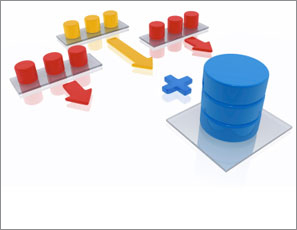Data management is the development and execution of architectures, policies, practices and procedures in order to manage the information lifecycle needs of an enterprise in an effective manner. We help you collect, integrate, organize, store and interpret the data your business generates. Our experts do the technical, behind-the-screen work for you. So you can focus on what it is that you do best, running your business.
Ensuring timely access to accurate data is the essence of Data Management solutions. Data is needed to make informed decisions, to deliver better products and services and to ensure good customer service. Companies that do a better job of managing their data have a strong competitive advantage.
Don't let data loss and data recovery keeps you up at night. Instead, take a proactive approach to data integrity and data protection and use online data backup solutions and managed storage replication services to help you: Safeguard company-wide data Meet data recovery time and recovery point objectives Backup data from corporate data centers and global branch offices to the mobile perimeter Increase protection across PCs, servers, storage and network resources Take advantage of enterprise-level security, reliability and scalability of our global Internet Data Centers


Database administration is extremely important in managing data. Every organization or enterprise needs database administrators that are responsible for the database environment. Database administrators are usually given the authority to do tasks that involve recoverability, integrity, security, availability, performance, and development & testing support. Recoverability is usually defined as a way to store data as back up and then test the backups to make sure that they are valid. The task of integrity means that data that is pulled for certain records or files are in fact valid and have high data integrity. Data integrity is extremely important especially when creating reports or when data is used for analysis. If data is deemed invalid, the results will be worthless. Availability is defined as making sure a database is up and running. Performance is related to availability and requires getting the most out of the hardware, applications, and data as possible. Performance is usually in relation to an organization's budget, physical equipment, and resources.
For data modeling we creating a structure for the data collected and using and organizing this data in a way that is easily accessible and efficient to store and pull the data for reports and analysis. In order to create a structure for data, it must be named appropriately and show a relationship with other data. It also must fit appropriately in a class. For instance, with a database of media, users might have a hierarchical structure of objects that include photos, videos, and audio files. Within each category, users can classify objects accordingly

We help you in the process of data moving from one place to another. For instance, data needs to be moved from where it is collected to a database and then to an end user, but this process takes quite a bit of logistic insight. Not only do all hardware, applications and data collected need to be compatible with one another, they must also be able to be classified, stored and accessed with ease within an organization. Moving data can be very expensive and can require lots of resources to make sure that data is moved efficiently, that data is secure in transit and that once it reaches the end user, it can be used successfully either to be saved on a computer, printed out as a report, or sent as an email attachment.

